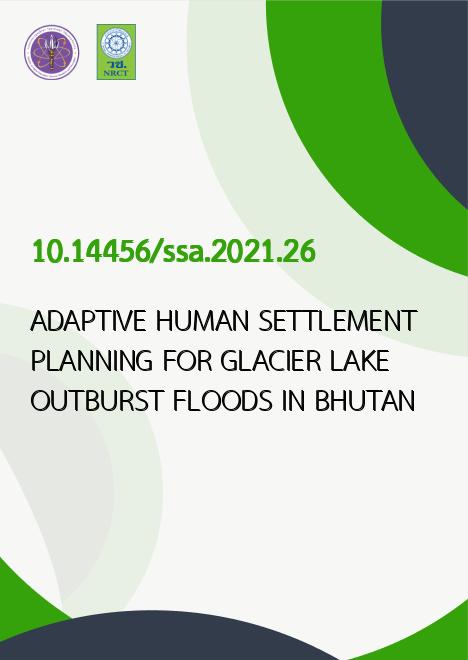
|
ADAPTIVE HUMAN SETTLEMENT PLANNING FOR GLACIER LAKE OUTBURST FLOODS IN BHUTAN |
|---|---|
| รหัสดีโอไอ | |
| Creator | Kinzang Dorji |
| Title | ADAPTIVE HUMAN SETTLEMENT PLANNING FOR GLACIER LAKE OUTBURST FLOODS IN BHUTAN |
| Publisher | National Research Council of Thailand |
| Publication Year | 2564 |
| Journal Title | SOCIAL SCIENCE ASIA : Official Journal of National Research Council of Thailand in conjunction with Art and Architecture Journal Naresuan University (AJNU) |
| Journal Vol. | 7 |
| Journal No. | 4 |
| Page no. | 9-16 |
| Keyword | Human Settlement, Planning, Glacier Lake Outburst Flood, Bhutan |
| URL Website | http://e-journal.nrct.go.th/ |
| Website title | e-journal |
| ISSN | 2229-2608 |
| Abstract | Some of Bhutan's earliest civilizations occurred along the valleys of major river systems due to their fertile deposits favourable for agriculture and settlement. Since then, the river systems and tributaries have not only shaped Bhutan's physical landscape and guided human settlement patterns but also have progressively become the very source of livelihood. Even to this day, Bhutan is highly dependent on its fast-flowing rivers used for generating hydropower, which contributes to 14 percent of GDP and 26 percent of the annual revenue, becoming the largest contributor to the Bhutanese economy. Most of these rivers originate in the frigid alpine regions in the north fed by Glacier Lake, melting snow, and rain. However, with the erratic rainfall pattern and change in temperature induced by the growing impact of climate change, the country's fragile alpine topography has been subjected to increasing risk from its river system, particularly the risks associated with the Glacier Lake Outburst Floods (GLOFs). While there are a significant number of studies conducted on the mitigation measures of the threat from GLOFs in Bhutan, there are none that focus on adaptive planning in the event of such threats. Therefore, this article shares the experience of Bhutan's unique challenges in its adaptation efforts and attempts to provide alternate adaptive solutions from the perspective of urban and spatial planning. |